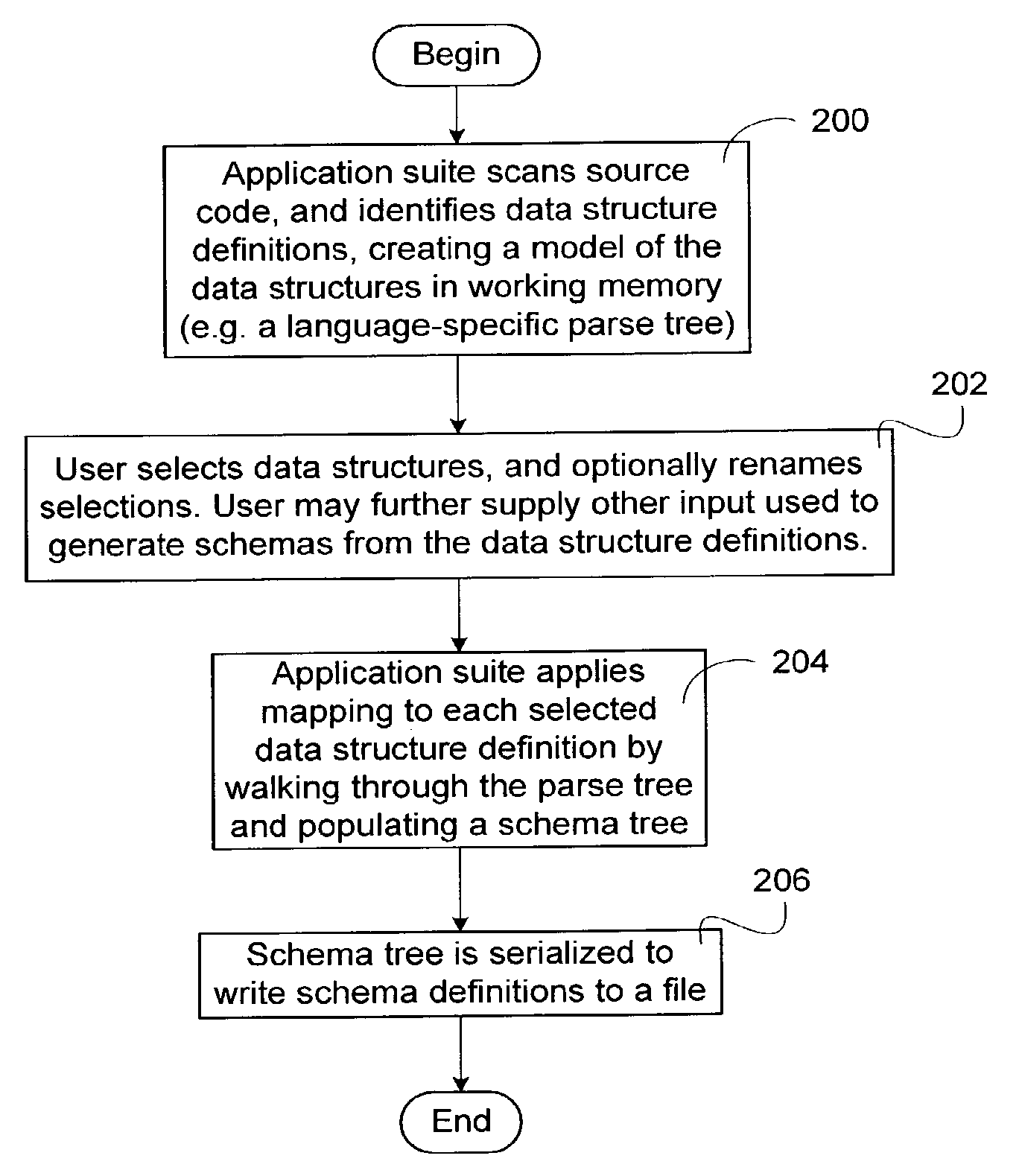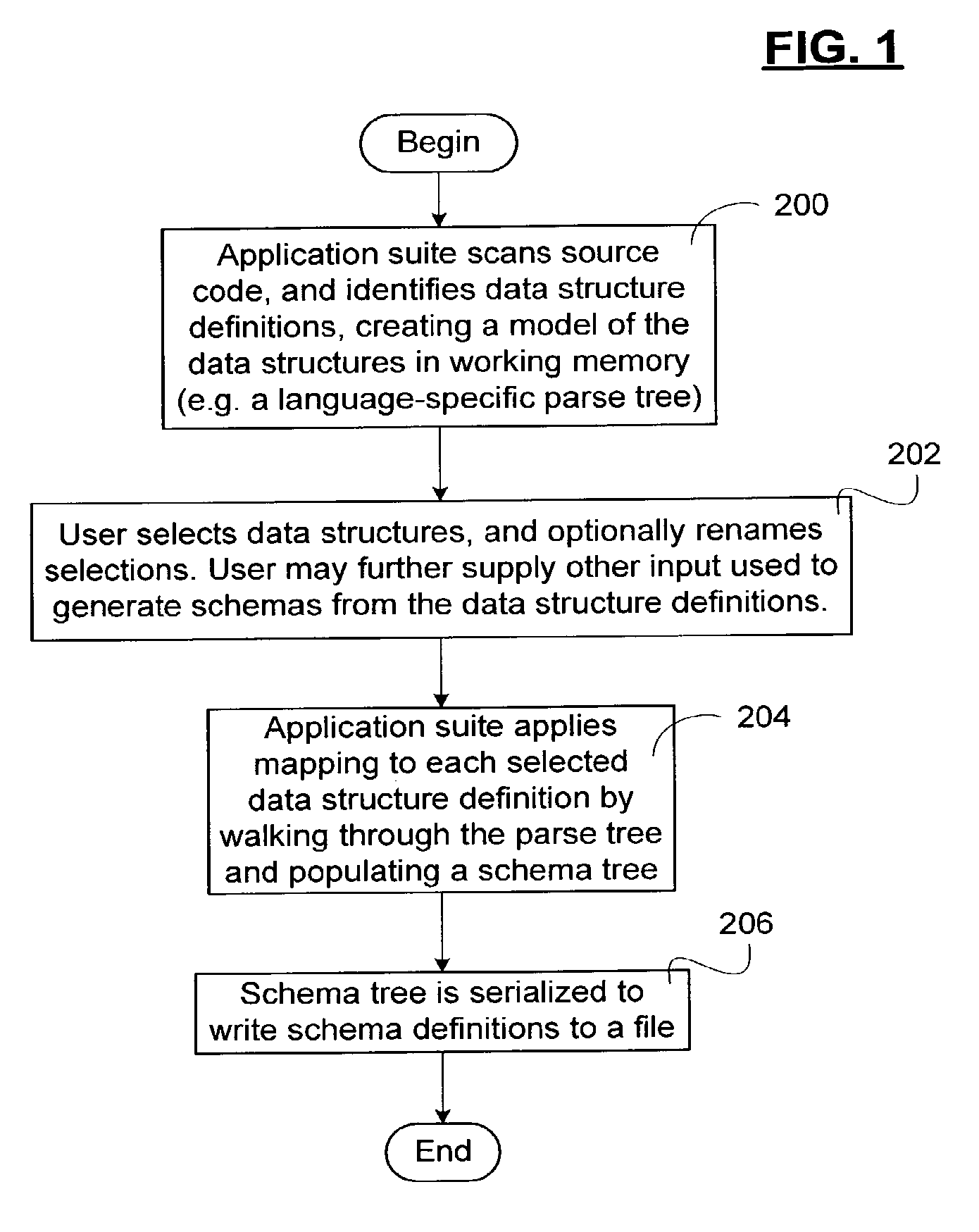Method and Apparatus for Converting Legacy Programming Language Data Structures to Schema Definitions
a programming language and schema technology, applied in programming languages/paradigms, instruments, program control, etc., can solve problems such as legacy computer applications, not being adapted to be executed by current computing platforms, and not being provided with mapping algorithms, so as to reduce application development costs and improve time to market
- Summary
- Abstract
- Description
- Claims
- Application Information
AI Technical Summary
Benefits of technology
Problems solved by technology
Method used
Image
Examples
examples
[0048]A few examples of COBOL and C source code, and respective output of the method of the present invention, illustrating respective aspects of the invention follow.
[0049]A first example of a data structure definition written in COBOL, defines a relatively uncomplicated data structure having three elements, a first of which is a data type, a second of which is a structure having one element. The one element is an array of fixed length. The third element comprises two variable-length array elements.
identification division. program-id. example1. data division. working-storage section. linkage section. 01 COMMAREA. 05 control1 pic 9(2). 05 out1. 10 field1 pic x(10) occurs 17 times. 05 in1. 10 team occurs 1 to 4 times depending on control1 pic9(2). 10 car occurs 1 to 5 times depending on control1 pic9(2).
[0050]In accordance with the methods of FIGS. 2&3, the following schema definition is derived from the data structure named COMMAREA. The header of which comprises ...
PUM
 Login to View More
Login to View More Abstract
Description
Claims
Application Information
 Login to View More
Login to View More - R&D
- Intellectual Property
- Life Sciences
- Materials
- Tech Scout
- Unparalleled Data Quality
- Higher Quality Content
- 60% Fewer Hallucinations
Browse by: Latest US Patents, China's latest patents, Technical Efficacy Thesaurus, Application Domain, Technology Topic, Popular Technical Reports.
© 2025 PatSnap. All rights reserved.Legal|Privacy policy|Modern Slavery Act Transparency Statement|Sitemap|About US| Contact US: help@patsnap.com



